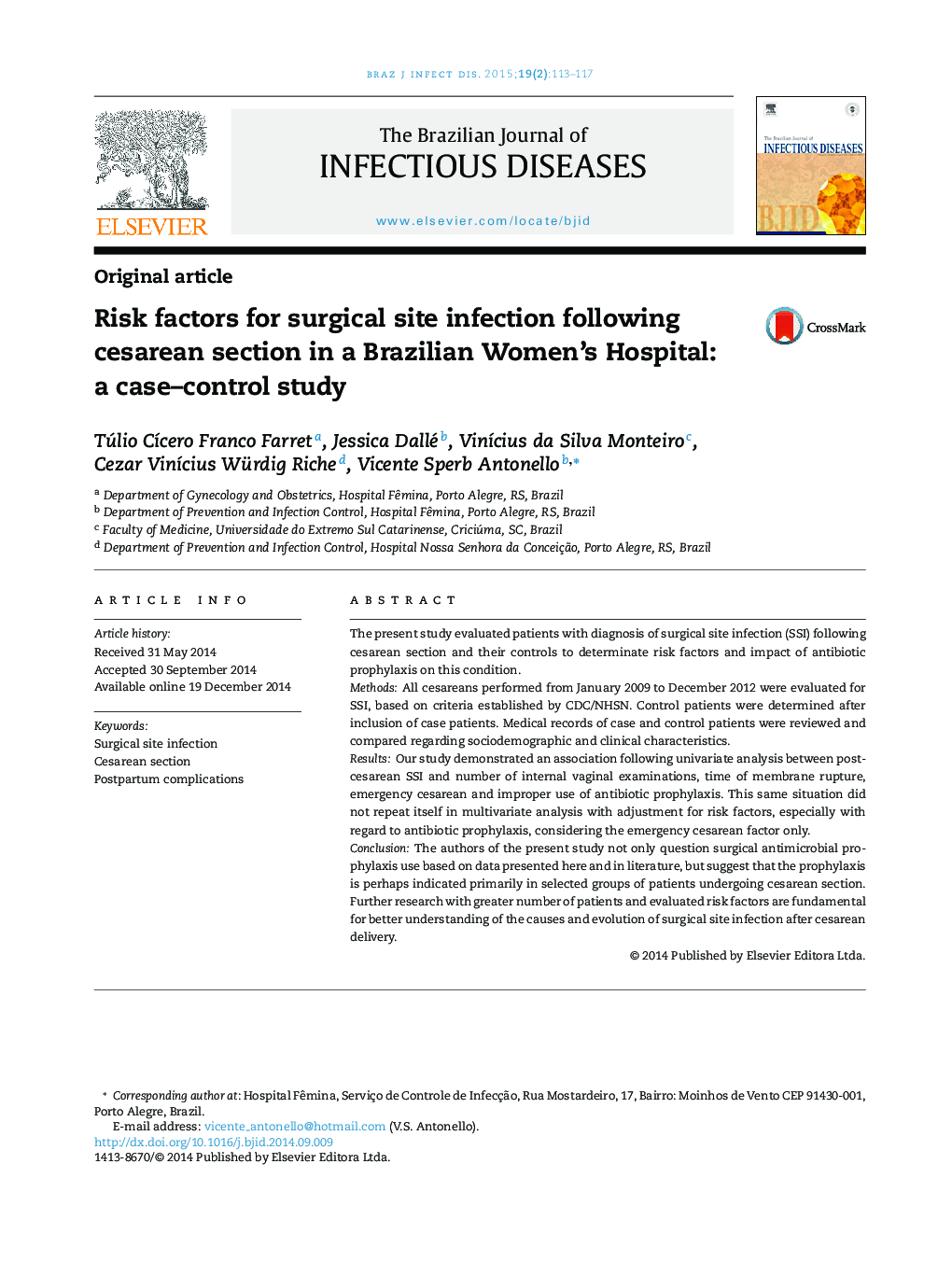| Article ID | Journal | Published Year | Pages | File Type |
|---|---|---|---|---|
| 3343820 | The Brazilian Journal of Infectious Diseases | 2015 | 5 Pages |
The present study evaluated patients with diagnosis of surgical site infection (SSI) following cesarean section and their controls to determinate risk factors and impact of antibiotic prophylaxis on this condition.MethodsAll cesareans performed from January 2009 to December 2012 were evaluated for SSI, based on criteria established by CDC/NHSN. Control patients were determined after inclusion of case patients. Medical records of case and control patients were reviewed and compared regarding sociodemographic and clinical characteristics.ResultsOur study demonstrated an association following univariate analysis between post-cesarean SSI and number of internal vaginal examinations, time of membrane rupture, emergency cesarean and improper use of antibiotic prophylaxis. This same situation did not repeat itself in multivariate analysis with adjustment for risk factors, especially with regard to antibiotic prophylaxis, considering the emergency cesarean factor only.ConclusionThe authors of the present study not only question surgical antimicrobial prophylaxis use based on data presented here and in literature, but suggest that the prophylaxis is perhaps indicated primarily in selected groups of patients undergoing cesarean section. Further research with greater number of patients and evaluated risk factors are fundamental for better understanding of the causes and evolution of surgical site infection after cesarean delivery.
